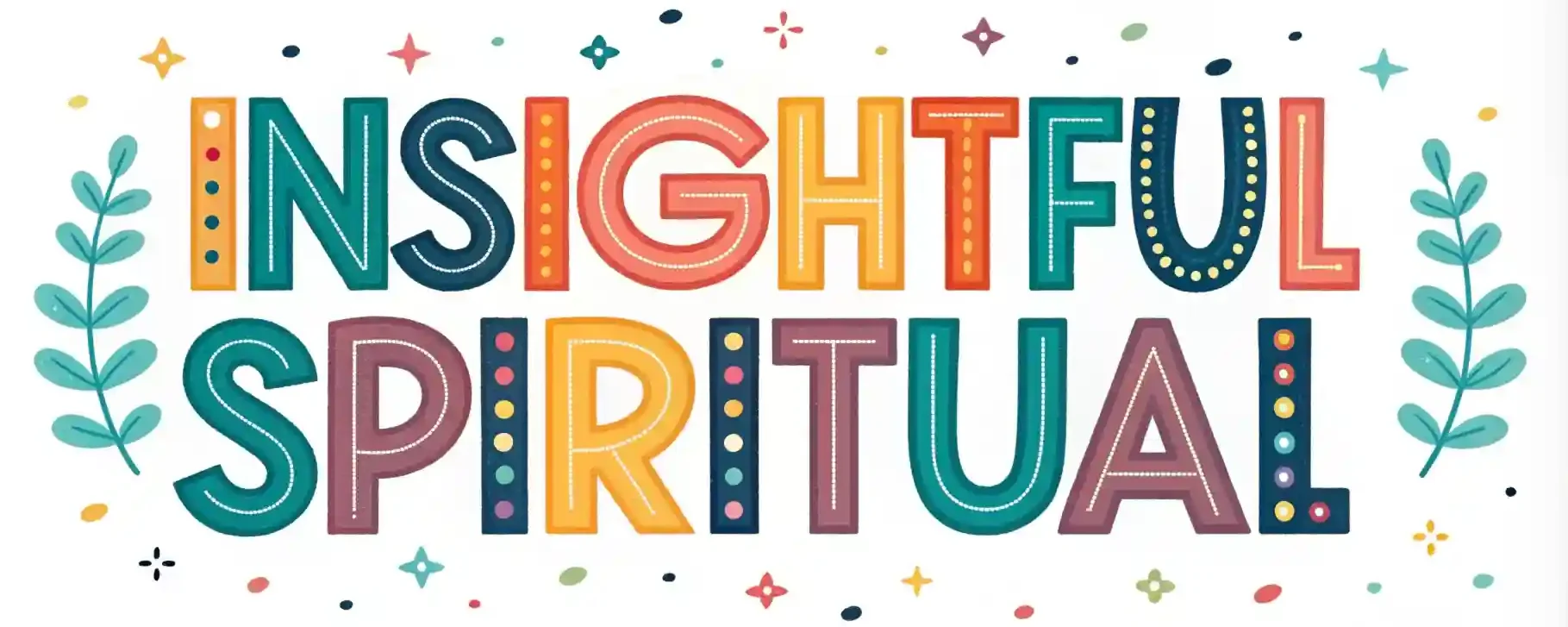Biblical Meaning of the Grasshopper & Its Spiritual Significance
As you explore the biblical significance of the humble grasshopper, you’ll discover a complex web of symbolism that’s both fascinating and thought-provoking. On one hand, these insects represent fertility and abundance, echoing their importance in ancient cultures.
Yet, they also symbolize a test of faith and resilience, reminiscent of the Israelites’ struggle in the wilderness.
But there’s more to the story – the grasshopper’s role in biblical narratives takes a darker turn, foreshadowing devastating plagues and divine judgment. What lies at the heart of this intriguing paradox, and what can you learn from it?
Biblical Meaning of Grasshopper In a Nutshell

- In the biblical narrative, the grasshopper represents a challenge to faith and resilience, echoing the Israelites’ wilderness survival experience.
- The grasshopper’s presence underscores the importance of perseverance and adaptability in the face of adversity, trusting God will provide necessary resources.
- The plague of locusts in the biblical account symbolizes the devouring nature of sin and the consequences of disobedience, leading to spiritual famine.
- The grasshopper represents Wisdom personified, embodying the virtues of diligence and thriftiness, encouraging prioritization of planning and responsible stewardship.
- The grasshopper also symbolizes the fallen angels who abandoned their divine duties to pursue selfish desires, seeking power and control instead of serving as messengers of light.
Symbolism in Ancient Cultures
In ancient cultures, you’ll often find that the grasshopper symbolized fertility, abundance, and good luck, particularly in societies where agriculture was a vital part of daily life.
This cultural significance is rooted in the insect’s remarkable ability to multiply rapidly, making it a potent symbol of prosperity.
In ancient rituals, grasshoppers were often depicted in art and literature as a harbinger of good fortune, and their presence was believed to guarantee a bountiful harvest.
For instance, in ancient China, grasshoppers were seen as a symbol of good luck and prosperity, while in Africa, they were associated with fertility and abundance.
The grasshopper’s impressive jumping ability also made it a symbol of freedom and liberation.
As you explore further into the symbolism of the grasshopper, you’ll discover that its significance extends beyond mere superstition, revealing a profound understanding of the natural world and humanity’s place within it.

Grasshoppers in the Wilderness
As you venture into the biblical narrative, you’ll encounter the grasshopper in the wilderness, where it assumes a distinct symbolic significance that diverges from its cultural associations with fertility and abundance.
The grasshopper represents a challenge to your faith and resilience, echoing the Israelites’ wilderness survival experience. In this arid landscape, the grasshopper’s ability to navigate and thrive despite the harsh conditions serves as a powerful metaphor for desert navigation.
The biblical account portrays the Israelites’ struggle to trust God’s provision in the face of scarcity and uncertainty, and the grasshopper’s presence underscores the importance of perseverance and adaptability in the face of adversity.
As you reflect on the grasshopper’s role in this narrative, you’re invited to examine your own wilderness experiences, where you’ve faced seemingly insurmountable obstacles and doubts.
The grasshopper’s symbolic presence encourages you to lean into your faith, trusting that God will provide the necessary resources for survival and growth. By embracing this symbolism, you’ll discover a deeper sense of freedom and empowerment, enabling you to navigate life’s challenges with confidence and hope.
Abundance and Fertility Symbol
Delving into the cultural significance of grasshoppers, you’ll uncover a rich symbolism tied to abundance and fertility, which stands in stark contrast to its role in the wilderness narrative.
In many ancient cultures, grasshoppers were seen as a symbol of the earth’s fertility and the cycles of nature. They represented the cyclical patterns of growth, decay, and rebirth, reminding us of the importance of living in harmony with the natural world.
As a symbol of abundance, grasshoppers were often associated with earthly blessings, such as a bountiful harvest or a successful hunt. They embodied the idea that the earth provides for our needs, and that we must respect and care for it in return.
Devouring Locusts and Judgment
You may be familiar with the biblical account of the plague of locusts that devoured the entire Egyptian harvest, serving as a harbinger of divine judgment and retribution.
This devastating event wasn’t just a natural disaster, but a deliberate act of God’s wrath upon a nation that had enslaved His people.
The locusts, in this context, symbolize the devouring nature of sin and the consequences of disobedience.
When you allow sin to reign in your life, it can lead to spiritual famine, leaving you barren and unfruitful.
The biblical account serves as a warning, reminding you that God is a God of justice and won’t tolerate sin indefinitely.
The plague of locusts represents the famine spirits that come to destroy and devour, leaving behind a trail of destruction and desolation.
Divine chastisement is a reality, and vital to acknowledge the signs of God’s judgment, repent, and turn back to Him before it’s too late.
As you reflect on the biblical meaning of grasshoppers, remember that they can also symbolize the destructive power of unchecked sin and the importance of living a life pleasing to God.

Plague of the Egyptians
The eighth plague, which entailed a devastating infestation of locusts, was a deliberate and calculated act of God’s wrath triggered upon the Egyptians, demonstrating the consequences of their obstinate refusal to release the Israelites from bondage. You see, this plague was a direct challenge to the Egyptian magic that had captivated the people, making them believe in the power of their gods. However, as the locusts ravaged the land, destroying every green thing, the Egyptians were forced to confront the limits of their magic.
Pharaoh’s hardness of heart, which had driven him to enslave the Israelites, now led him to reject God’s warnings, further exacerbating the crisis. The plague was a manifestation of God’s power, surpassing the capabilities of Egyptian magic.
You realize that this display of divine authority was a precursor to the eventual liberation of the Israelites, as it exposed the vulnerability of the Egyptian empire. The plague served as a warning to Pharaoh and his people, highlighting the futility of their resistance against the God of the Israelites.
Consequences of Disobedience
As the Egyptians’ stubborn refusal to yield to God’s demands led to the devastating consequences of the locust plague, it becomes clear that their disobedience would ultimately culminate in a far more severe reckoning.
You see, their willful defiance wasn’t just a one-time mistake, but a pattern of behavior that led to a hardening of their hearts. They chose to ignore the signs and warnings, opting instead for blind obedience to their own desires and traditions.
This obstinacy opened the door to a series of catastrophic events that would ultimately lead to their downfall.
Your own life isn’t immune to the consequences of disobedience. When you choose to ignore the whispers of your conscience or the guidance of scripture, you risk inviting chaos and destruction into your life.
The biblical account of the Egyptians serves as a stark reminder that our choices have consequences.
Will you heed the warning, or will you continue down a path of willful defiance? The choice is yours, but know that the outcome is certain: disobedience leads to destruction, while obedience leads to freedom and life.
The Prophet Nahum’s Warning
Nahum’s prophecy, penned during the seventh century BCE, serves as a scathing indictment of Nineveh’s corruption, its words dripping with urgency as they warn of an impending judgment that would shatter the city’s complacent facade.
As you explore into the prophet’s message, you’ll discover a prophetic voice that echoes through the centuries, speaking directly to your heart. Nahum’s warning is a clarion call to repentance, a reminder that Divine judgment is imminent for those who refuse to acknowledge their wrongdoing.
You’re confronted with the reality of a God who’ll not tolerate injustice, oppression, or greed.
The prophet’s words are a stern rebuke to those who’ve exploited the vulnerable and ignored the cries of the marginalized. Nahum’s prophecy is a wake-up call, urging you to examine your own heart and confront the darkness that lurks within.
Will you heed the warning, or will you continue down the path of destruction? The choice is yours, but know that the consequences of ignoring the prophetic voice will be severe.
Joel’s Vision of Destruction
In Joel’s apocalyptic vision, you’re thrust into a desolate landscape where locusts, fire, and a withering drought converge to destroy the land, stripping it of its fertility and leaving its people bereft of hope.
This vivid destruction imagery serves as a warning, emphasizing the devastating consequences of sin and spiritual complacency.
As you explore further into Joel’s prophecy, you’ll discover that the locusts, representing God’s judgment, aren’t just physical pests but also symbolize the destructive forces that ravage humanity when it turns away from divine guidance.
Joel’s apocalyptic prophecy is a call to repentance, urging the people to turn back to God and seek redemption.
The prophet’s vision isn’t merely a dire prediction but a wake-up call, imploring the Israelites to recognize the gravity of their situation and take corrective action.
Through Joel’s words, you’re reminded that freedom from spiritual bondage requires a conscious decision to surrender to God’s will, acknowledging His sovereignty over the land and its people.
As you reflect on Joel’s vision, you’re compelled to confront the reality of your own spiritual state, seeking liberation from the destructive forces that threaten to consume you.
Grasshoppers in Solomon’s Wisdom
You shift your attention from the apocalyptic landscape of Joel’s prophecy to the wisdom-filled pages of Solomon’s teachings, where the humble grasshopper emerges as a symbol of wisdom, prudence, and industry in Proverbs 30:24-28.
The grasshopper represents Wisdom personified, embodying the virtues of diligence and thriftiness. Solomon’s insight highlights the grasshopper’s ability to prepare for the future, storing food during the summer for the winter ahead. This industrious nature serves as a model for humanity, encouraging us to prioritize planning and responsible stewardship.
As you explore more thoroughly into Solomon’s teachings, you discover that the grasshopper’s wisdom extends beyond mere preparation.
It exemplifies the importance of community and cooperation, as grasshoppers often work together to achieve common goals. Additionally, the grasshopper’s adaptability and resilience in the face of adversity serve as a demonstration to the power of perseverance and resourcefulness.
Through Solomon’s wisdom, the grasshopper becomes a powerful symbol of the importance of living a life of purpose, responsibility, and harmony with nature.
Representing the Fallen Angels
Beyond the domain of Solomon’s wisdom, the grasshopper assumes a more ominous role in biblical symbolism, representing the fallen angels who, like the insect’s erratic and unpredictable behavior, abandoned their divine duties to pursue selfish desires.
The grasshopper’s dark coloration is reminiscent of the dark angels that turned against God, seeking power and control instead of serving as messengers of light.
Like the grasshopper’s unpredictable leaps, the heavenly rebels jumped ship, so to speak, abandoning their posts to pursue their own interests.
The grasshopper’s ability to jump in any direction, unrestricted by external forces, serves as a reminder that even the fallen angels were given free will, choosing to exercise it in ways that led to their downfall.
As you explore into the symbolism of the grasshopper, you begin to realize that its representation of the fallen angels serves as a cautionary tale.
It reminds you that even the most powerful among us can fall prey to selfish desires, and that the pursuit of freedom must always be tempered by a sense of responsibility and duty.
Biblical References to Swarms
As you plunge into the biblical narrative, you’ll notice that swarms of grasshoppers are frequently depicted as instruments of divine judgment, triggering devastating plagues upon disobedient nations and serving as a stark reminder of God’s authority over the natural world.
These biblical plagues, often accompanied by divine wrath, demonstrate God’s power to intervene in human affairs and restore balance to a world gone astray.
In the book of Joel, for instance, a massive swarm of grasshoppers is described as a manifestation of God’s judgment on Judah, devouring everything in its path and leaving the land barren and desolate.
Similarly, in the book of Exodus, the eighth plague to afflict Egypt is a massive swarm of locusts, reminiscent of grasshoppers, which consumes every remaining crop and vegetation.
These biblical accounts illustrate the gravity of disobeying God’s commands and the consequences of rejecting His will.
The Power of Small Creatures
As you excavate into the biblical meaning of grasshoppers, you begin to appreciate the significance of small creatures in faith systems. Through their sheer numbers and unrelenting ferocity, small creatures like grasshoppers wield a disproportionate influence on the natural world, exemplifying the biblical principle that God often employs the weak and humble to accomplish His purposes.
This concept is particularly evident in the natural wonders of the biblical narrative.
In the book of Exodus, God uses a plague of locusts to demonstrate His power and authority over the Egyptians.
In Proverbs, ants are held up as an example of diligence and hard work, encouraging believers to emulate their habits.
In the New Testament, Jesus is likened to a bee, emphasizing the importance of community and cooperation within the body of Christ, serving as a powerful testament to the value of unity and collective effort.
Grasshopper’s Connection to Baal
One of the most intriguing aspects of the biblical meaning of grasshoppers lies in their connection to Baal, the ancient Canaanite deity often associated with fertility and agriculture.
As you explore into the biblical account, you’ll discover that Baal worship was a pervasive practice among the Israelites, leading them away from the one true God. The worship of Baal involved the veneration of Pagan idols, which symbolized the false promise of fertility and prosperity.
Grasshoppers, with their ability to consume and destroy crops, may have been seen as a symbol of the destructive power of Baal worship.
When you consider the biblical narrative, it becomes clear that the Israelites’ idolatry led to their downfall.
The prophet Joel, in particular, uses the imagery of grasshoppers to describe the devastating consequences of God’s judgment upon the nation.
The connection between grasshoppers and Baal serves as a powerful reminder of the dangers of idolatry and the importance of remaining faithful to the one true God.
As you reflect on this biblical connection, you’re encouraged to examine your own life, ensuring that you’re not succumbing to the allure of false idols and instead, remaining committed to the pursuit of freedom and truth.
Lessons From the Book of Revelation
In the apocalyptic vision of Revelation, the grasshopper’s symbolism takes on a profound significance, illuminating the consequences of humanity’s rebellion against God and the ultimate triumph of divine justice.
As you explore into the Book of Revelation, you’ll discover that the grasshopper represents the locust-like armies of God, sent to afflict those who’ve rejected His sovereignty.
In this End Times Prophecy, the grasshopper’s role is multifaceted:
Destruction of idolatry: The grasshopper’s connection to Baal, a false god, highlights the devastating consequences of humanity’s idolatry. God’s judgment won’t spare those who’ve rejected Him for false idols.
Heavenly Manna: The grasshopper’s ability to feed on the Heavenly Manna, a symbol of divine provision, underscores the promise of spiritual sustenance for those who remain faithful to God.
Triumph of divine justice: The grasshopper’s role in the apocalyptic vision signifies the ultimate triumph of divine justice, where God’s wrath is poured out on those who’ve rejected Him, and His mercy is bestowed upon those who’ve remained faithful.
As you reflect on the grasshopper’s symbolism in Revelation, you’re reminded that God’s justice isn’t to be feared, but rather, it’s a call to repentance and a promise of redemption for those who seek freedom from the shackles of sin.
Spiritual Significance Today
Beyond the apocalyptic landscape of Revelation, the grasshopper’s symbolism continues to resonate with profound spiritual significance today, urging you to confront the idolatry that lurks within your own heart.
As you reflect on the grasshopper’s prophetic message, you’re compelled to examine the areas where you’ve compromised your faith, allowing worldly desires to supplant your devotion to God. This introspection is a pivotal step towards Faith Renewal, where you recommit to prioritizing your relationship with the divine.
The grasshopper’s symbolism also speaks to the development of Inner Strength, a fundamental component of spiritual maturity.
Just as the grasshopper’s ability to leap forward isn’t hindered by its diminutive size, you’re reminded that true strength lies not in external circumstances, but in your inner resilience and trust in God’s sovereignty.
By embracing the grasshopper’s spiritual significance, you’ll be empowered to overcome the obstacles that have held you back, and emerge stronger, wiser, and more faithful.
As you navigate life’s challenges, the grasshopper’s prophetic message will continue to inspire you to cultivate a deeper, more authentic faith that sets you free.
Frequently Asked Questions
What Is the Symbolic Meaning of Grasshoppers in Modern Christianity?
As you explore the symbolic meaning of grasshoppers in modern Christianity, you’ll find they represent a call to faithful obedience and spiritual diligence, urging you to surrender your fears and doubts, embracing God’s sovereignty and guidance for true freedom.
Can Grasshoppers Be Seen as a Symbol of Good Luck?
You explore the concept, finding that, in many cultures, grasshoppers symbolize good luck, prosperity, and abundance, holding personal significance for those who see them as a harbinger of positive change, reflecting their cultural significance.
Are Grasshoppers Mentioned in Other Religious Texts Beyond the Bible?
You’ll discover that, beyond biblical references, grasshoppers appear in other religious texts, particularly in Hindu mythology, where they symbolize rebirth, and in Buddhist symbolism, representing transformation and spiritual growth.
How Do Grasshoppers Relate to the Concept of Spiritual Growth?
As you set out on your spiritual journey, you’ll find that grasshoppers symbolize inner transformation, leveraging their remarkable molting process to illustrate the shedding of old patterns, making way for spiritual awakening and rebirth, ultimately liberating you from constraints that bind.
Are There Any Specific Prayers or Rituals Involving Grasshoppers?
As you seek spiritual growth, you’ll find that some cultures believe in invoking grasshopper blessings through rituals, where they’re released or used as insect offerings, symbolizing transformation and renewal, allowing you to tap into their energetic resonance for personal liberation.

Hi, I’m Aurelia Starfrost, your spiritual guide at InsightfulSpiritual.com. I love exploring ancient wisdom and modern practices to help you on your journey. With a focus on meditation and energy healing, I’m here to guide you to find solace within and discover your spiritual essence.







